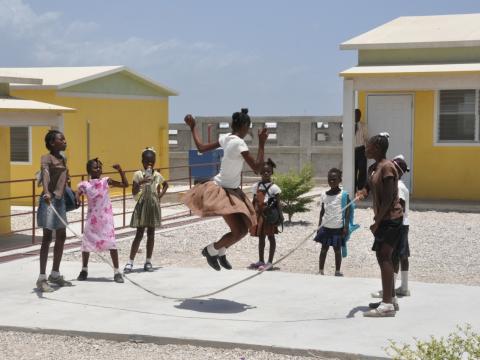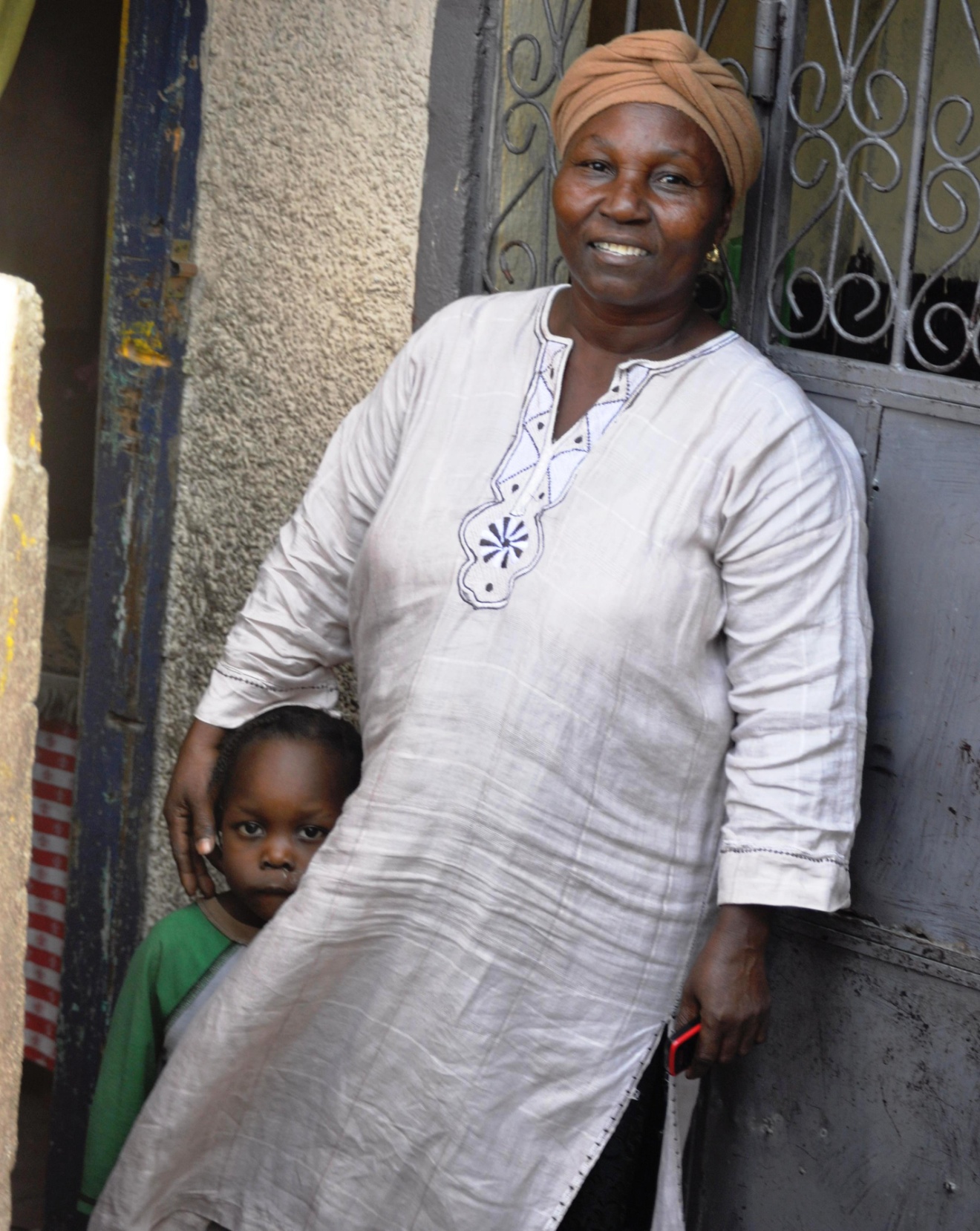Haiti Four Years Later

By Jean-Claude Mukadi, World Vision Haiti National Director
“I was able to leave the camp and move in to a decent home with my children”, recalls Fifi, Haitian mother of five.” Like many others, Fifi was among the 1.5 million people forced to live in poor conditions in a tent with her children for nearly two years, after the devastating 2010 earthquake.
Four years later, the country is still susceptible to natural disasters and instabilities. World Vision Haiti continues to answer the call for long-term solutions in Education, Health Care, Food Securities and Protection of targeted vulnerable groups in close partnership with government authorities, community-based management, local and international institutions.
As of January 2014, 90% of families have moved home.
From 2010 until January 2014, 90% of families have moved home. Unfortunately, as of January 2014, more than 147,000 people still live in inhuman conditions in camps. Hygiene promotion, protection in camps, forced evictions and non-durable solutions to displacement remain major issues of concern. World Vision Camp Transition programme offers many families like Fifi’s support to find safer housing and livelihoods.
“With the support of World Vision’s accompanying programme “Camp Transition”, I was able to rent the house where I live with my family and start a small business to take care of them,” says Fifi with gratitude. “I thank God for the support and am glad to see that several families living in my camp have benefited from the same program.”
Fifi stands with her grandson, in front of her new house
Access to basic services, in particular for this range of the population, remains a big challenge. World Vision is committed to raising awareness and acceptance of improved hygiene and health practices. In close collaboration with the Ministry of Health (MSPP), health promoters, leader mothers and community members have been trained to screen children with malnutrition in communities and to refer them to the established treatment facilities.
Leader Mothers are former beneficiaries and have been trained on Vaccination, Nutrition, Family Planning, Pregnancy and Breastfeeding, Body and Hygiene, and Acute Respiratory Infection in Children. They provide services such as home visits for counseling, health education through mother’s clubs and community meetings, malnutrition screening and appropriate referrals.
In 2012, in partnership with other NGOs and Government entities, World Vision published a detailed analysis of the child protection system in Haiti. This report showed that to ensure a better social coverage and respond to basic needs of the population, Haiti would need to multiply its efforts to support the strengthening of the child protection system.
Achieving this goal would require a particular emphasis on policy and legislative framework definition, on monitoring, accountability and effective coordination of resource allocation. Children need to be an integral part of the “bold vision” to eradicate poverty in our lifetime.
Over the long-term, it will take significant investment from all key stakeholders and the private sector to build a better Haiti. Taking a holistic approach to tackle the root causes of poverty and social injustice, to create an environment that is safe and favourable to business opportunities requires the commitment and coordination of all forces. Haiti is at a crucial turning point of its history and requires support from international partners for the next 10 to 20 years.
“I pray that World Vision will continue to support my community. I plan on doing my best with the means provided to raise my children,” says Fifi, with hope in her voice.
